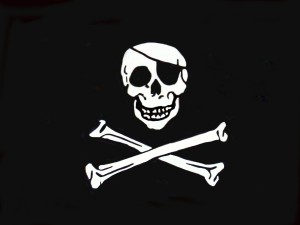 NEWS
NEWS
 NEWS
NEWS
 NEWS
NEWS
![]() Law enforcement agencies around the world are learning to anticipate criminal behavior by studying millions of invisible clues hiding in the big data spectrum. We’ve already seen how local police forces have done this, using big data to analyze so-called ‘crime hotspots’ in certain cities, but as the knowledge begins to spread, we’re seeing even more examples of this being put to good use.
Law enforcement agencies around the world are learning to anticipate criminal behavior by studying millions of invisible clues hiding in the big data spectrum. We’ve already seen how local police forces have done this, using big data to analyze so-called ‘crime hotspots’ in certain cities, but as the knowledge begins to spread, we’re seeing even more examples of this being put to good use.
Mapping the Seven Seas
One of the better examples of this is in international shipping, where piracy has been ‘rocking the boat’ with increasing regularity. The problem is so bad that one recent estimate suggests that these attacks cost the shipping industry more than $7 billion in 2011 alone. Even worse, at least 35 sailors were killed by pirates in that same year, usually after being taken hostage.
So sailors and shipping companies alike will be pleased to know that the incidences of piracy have declined quite dramatically over the last twelve months – with 54% less attacks seen in 2012 compared to the previous year, according to the Maritime Bureau.
One reason for this is the increased number of patrols by military vessels in the world’s biggest piracy hotspot, the Gulf of Aden, but that’s not the only reason. As well as getting out the big guns to police the world’s oceans, governments also have a different kind of weapon in their arsenal, using big data to stop attacks before they happen.
![]() A number of big shipping companies have turned to a software firm called Esri, which offers an advanced mapping program capable of pulling in vast amounts of data from thousands of different sources, allowing users to create maps that illustrate just about anything they want.
A number of big shipping companies have turned to a software firm called Esri, which offers an advanced mapping program capable of pulling in vast amounts of data from thousands of different sources, allowing users to create maps that illustrate just about anything they want.
With regard to piracy, there’s simply tons of data out there that it can pull from the internet – from news reports and social media posts, to interviews with the pirates themselves and god knows what else.
Authorities put all of this data together and use it to try and predict where and when pirate attacks might happen. Esri is capable of sifting through this information far more efficiently than any human could do, quickly identifying patterns and trends that indicate how and where the pirates operate. And once we know this, we have a much better chance of stopping or avoiding the bad guys before they can act.
Support our mission to keep content open and free by engaging with theCUBE community. Join theCUBE’s Alumni Trust Network, where technology leaders connect, share intelligence and create opportunities.
Founded by tech visionaries John Furrier and Dave Vellante, SiliconANGLE Media has built a dynamic ecosystem of industry-leading digital media brands that reach 15+ million elite tech professionals. Our new proprietary theCUBE AI Video Cloud is breaking ground in audience interaction, leveraging theCUBEai.com neural network to help technology companies make data-driven decisions and stay at the forefront of industry conversations.